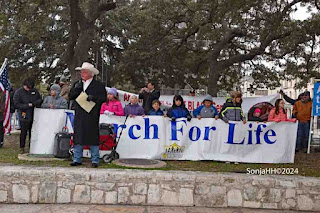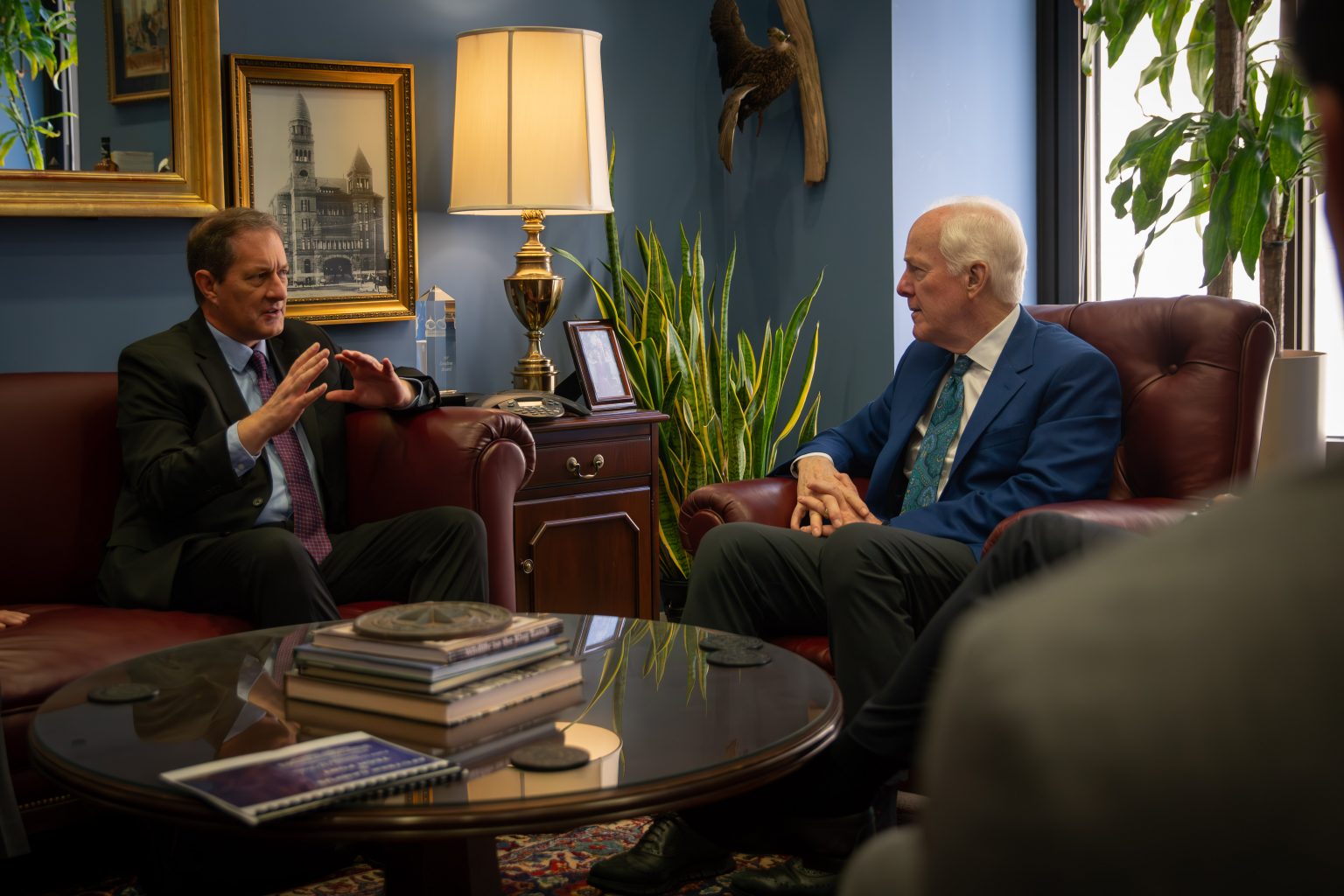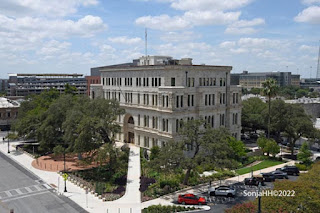Battle Over the Alamo Cenotaph Intensifies
On December 18, 2019 the Historic and Design Review Commission listened to approximately 50 speakers, mostly opposing the relocation of the Alamo Cenotaph. In spite of the compelling testimonials the panel of eleven heard, they voted seven to four to move on with Phase I of the project. The four commissioners that voted against Phase I basically because of the cemetery issue were Scott Carpenter, John Laffoon, Alvarado Arreda Jr. and Gabriel Velasquez who led most of the discussion concerning the location of the bodies. At one point he commented, “If it is a cemetery then this does amount to desecration of a cemetery.”
The most serious arguments advanced were that the battlefield was a historic cemetery. Lee Spencer White representing the Alamo Defender Descenders Association, the most dedicated to opposing the Alamo cenotaph move was there to make her case. She passed out the first page of the lawsuit concerning the Alamo cemetery and cenotaph. She addressed the panel and asked, “How can there be a vote to disassemble the cenotaph without absolutely knowing the exact site of the new super structure?” She had sensible questions for the designers when addressing the panel. She felt these items had to be addressed before the cenotaph could be moved.
1. Archeological study to determine the cemetery location.
2. Soil samples to the depth of the deepest footing of the structure
3. Location of utilities and whether they can be moved, if necessary.
White also said the General Land Office had agreed to wait on the relocation until after the lawsuit in January 21, 2020 was heard.
Attorney, Art Martinez de Vara, representing the Tap Pilam Coahuiltecan Nation, presented documentation proving that the Texas Historical Commission recognizes a Historic Texas cemetery in the Alamo area. He further stated that this area, the Alamo, may be where the work is to be done for the ‘reimagine’ project.
|
Martinez de Vara gave a factual account of the earliest Mission Valero records dating to November 17, 1749. He stated that, “there are four known cemetery locations.” He enumerated the four: The first is near and under the Federal building where over thirty bodies were exhumed during construction. Second, an area outside the walls of the mission which were reserved for the unbaptized. Third, south of the chapel court yard in the area near where the cenotaph relocation is being proposed and the fourth burial location was during the 1828 cholera epidemic burials were known to have been made on the side of the mission.
He offered a solution to the panel while some listened intently. First, that the applicants be required to complete a cemetery boundary delineation study and an archival archeological study. Second, that the applicants be required to follow the Uniform Development code, UDC, in particular Section 106 of the Historical Preservation Act which requires lineal descendants and affiliated groups to be consulting parties on the project.A captivating testimonial opposing the move of the cenotaph was given by Cindy Gaskill, illustrating her extensive research into why the sculptor Pompio Coppini had selected the location of the cenotaph. She told the panel that Coppini knew exactly where he intended the monument to be. Her description, read from one of Coppini’s letters, was passionate especially regarding the front panel the Spirit of Sacrifice. Gaskill read out loud to the panel, “Coppini writes their souls ascend into Heaven emanating from their mangled burning flesh. The Spirit of Sacrifice goes on and on to reach glorious immortality and it shall continue to furnish an inspiration and patriotic devotion and a sense of gratifying pride to the present and future generations.” She ended her four minute speech with, “Coppini understood the immense sacrifice the heroes made for Texas.” She was also the one to dare ask the panel, “You decide whether money or history will take precedence over the future of Alamo Plaza.”
Other testimonials included Ken Mercer, State Board Of Education member from District 5, a staunch history aficionado, who made it a point to tell the panel the history of how General Antonio Lopez de Santa Anna treated the Alamo defenders who survived. Santa Anna was a dictator who executed all remaining combatants and then ordered his men to strip, loot, and stack and burn their bodies. In doing this he denied them a Christian burial. There were some familiar faces giving their testimony, members of the Texas Freedom Force, Jack Finger, Dr. Alma Lynch, Maggie Wright as were several other fervent Texas patriots.
I was left wondering, and so should all Texans, as to why the Alamo plan highly paid consultants had not researched the history of the cenotaph and why an archeological study had not been performed prior to deciding to relocate the cenotaph. For that matter why ‘reimagine’ the Alamo, in the first place. No one should alter the ‘meaning’ or 'marginalize' why the defenders died at the Alamo. It was the 13 day siege from February 23 to March 6, 1836 that the defenders of Texas fought for liberty and died giving Texas its independence. The Alamo is known as the Cradle of Liberty giving birth to Texas. In hearing all the speakers opposed and those who agree on relocating the cenotaph, it will be a travesty IF the cenotaph is moved to a location that has no meaning and our Texas heroes will again be ‘stripped, looted, stacked and burned’.
THE RED REPORT©
RED SONJA
Fight, Never give up








